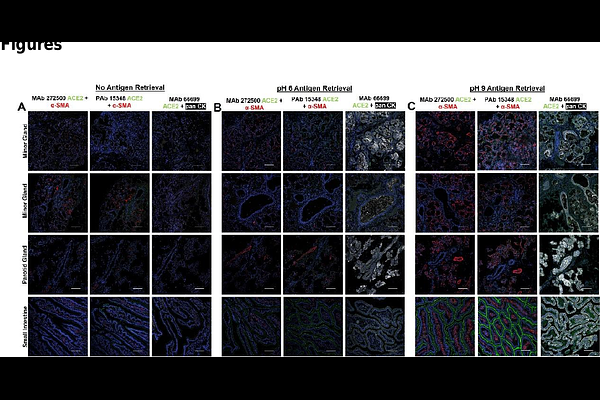Exploring Spike-Dependent and ACE2-Independent Viral Entry into Salivary Epithelial Cells in the Absence of ACE2

Exploring Spike-Dependent and ACE2-Independent Viral Entry into Salivary Epithelial Cells in the Absence of ACE2
Barrows, C. M. L.; Young, S.; Farach-Carson, M. C.
AbstractAbstract: Salivary gland infection by SARS-CoV-2 requires viral entry via routes and mechanisms that remain unresolved. This study examined the expression of the angiotensin-converting enzyme 2 (ACE2) receptor in salivary tissues and basal cell-derived human salivary progenitor cells (hS/PCs), an unstudied potential entry point for SARS-CoV-2. Multiple detection modalities, including immunocytochemistry, western blotting, flow cytometry and RT-PCR, demonstrated a consistent lack of ACE2 protein and transcript in both tissue specimens and primary salivary epithelial cells. Antigen retrieval at pH 9 was determined to be optimal for immunodetection protocols, yet ACE2 remained undetectable. Small intestine tissue served as a positive control, confirming the validity of the methods and reagents we used. Considering there can be other receptors for SARS-CoV-2, flow cytometric analyses demonstrated that recombinant SARS-CoV-2 spike protein failed to bind to salivary epithelial cells, in contrast to HEK293 cells engineered to overexpress ACE2, which showed robust spike binding. These findings strongly support our conclusion that salivary cells do not serve as major targets for SARS-CoV-2 infection via ACE2 or spike protein, whether through direct exposure to viral particles in ductal fluids or via access to basal cells across the basement membrane.